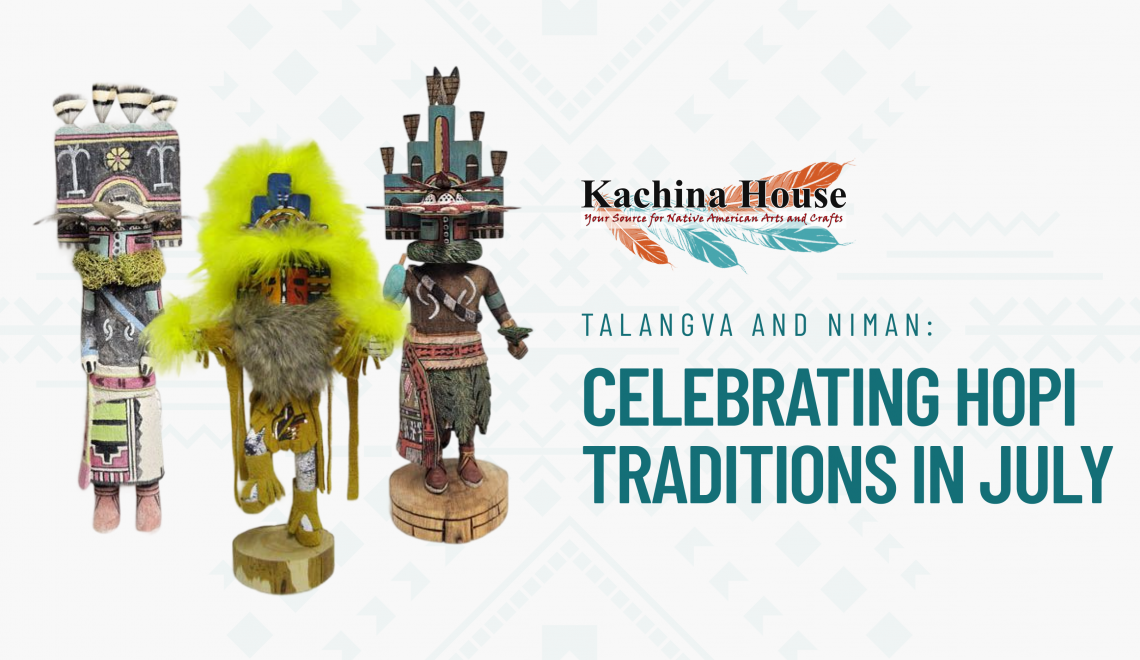
July is a special time in Hopi culture. As the sun rises over the mesas of northern Arizona, Hopi villages enter the sacred month of Talangva, a time filled with deep meaning, powerful ceremony, and spiritual connection. What is the special meaning behind this month, and why does it hold such an important place in Hopi life?
In this article, you’ll learn what Talangva means, what to expect during this important time, and why the Niman ceremony holds such a powerful place in Hopi life.
What is Talangva, and what happens during this Hopi month?
Talangva is both a closing and a beginning in Hopi life. It marks the end of the Katsina season, a sacred time when spiritual beings visit the villages to offer guidance, blessings, and prayers for rain and abundance. July is a month of deep reflection, ceremony, and preparation for the Niman, or “Home-Going,” ceremony.
Niman lasts sixteen days and celebrates the return of the Katsinam to their spirit home in the San Francisco Peaks. During this time, there is singing, dancing, and shared offerings of corn and melon, symbols of prosperity and the harvest to come. Brides of the year receive their wedding robes and blessings, surrounded by family and tradition.
On the final night, the Katsinam return to the kiva for prayer before they leave. A trail of cornmeal marks their path back to the mountains. Though their visit ends, their spirit remains with the people, guiding them through the months ahead until it is time to welcome them back.
Honoring the Katsinam – The Meaning of Niman in Hopi Life
The Niman ceremony is one of the most sacred events in the Hopi calendar. Held in mid-to-late July, it marks the closing of the Katsina season and the return of these spiritual visitors to their home in the San Francisco Peaks. For the Hopi people, it is a time of reflection, celebration, and giving thanks. The community offers gratitude for the rain, crops, and guidance the Katsinam have provided over the previous months.
Katsinam are deeply respected beings who serve as messengers between the spiritual world and the Hopi villages. Through their presence, the people receive important teachings about balance, respect for nature, and harmony within the community. Throughout the season, Hopi men personate these figures with care and devotion, wearing symbolic clothing and masks that honor each katsina’s role and character.
What does the Niman, or “Going Home,” ceremony signify?
As the Niman ceremony reaches its peak, the Katsinam appear one last time in the village plaza. Families gather to share food, children watch and learn, and young brides receive their ceremonial robes. The ceremony closes with prayer, as the Katsinam return to the kiva before departing. A path of cornmeal is laid to guide them back to the mountains, and the people send them off with hope that the blessings they’ve received will carry through the rest of the year.
Among the Katsinam who appear during Niman, Hemis Katsina is one of the most important. He wears a tall, decorated tablita headdress adorned with feathers and wheat tassels, along with a red sash, spruce around his neck, and colorful yarn across his chest. In his hands, he carries gifts for the children..
Hemis Katsina arrives with fully grown cornstalks in his arms, a symbol of successful harvest and abundance. Originally from the Jemez Pueblo, he is known as a rain bringer, and his presence during Niman continues to carry the same message of life, growth, and spiritual connection.
A Deeper Look at Hopi Traditions
Hopi traditions are not frozen in time. They live through community, family, and daily life. Ceremonies like Niman are part of a cycle that shapes how the Hopi relate to the land, to each other, and to unseen forces.
Talangva also teaches the value of transitions. As the Katsinam return home, the Hopi shift from a season of guidance to a season of growth and responsibility. The fields are planted, prayers have been made, and now it’s up to the people to nurture the gifts they’ve received.
You won’t find written scripts for the ceremonies. The knowledge passes through stories, experience, and observation. Young people learn by watching, helping, and listening to elders. This keeps the culture strong and rooted, even as the world outside changes.
Conclusion
Talangva and Niman illustrate how ceremony guides Hopi life. When Katsinam returns home, the Hopi step forward with land, spirit, family, and responsibility aligned. If you take anything from these traditions, let it be the importance of gratitude, respect, and mindful living.
By marking the end of the Katsina season with community, dance, and farewell, the Hopi offer a lesson: every journey matters, and every return brings new promise.
To learn more about Hopi traditions and explore authentic Katsina dolls that honor these ceremonies, visit Kachina House.

